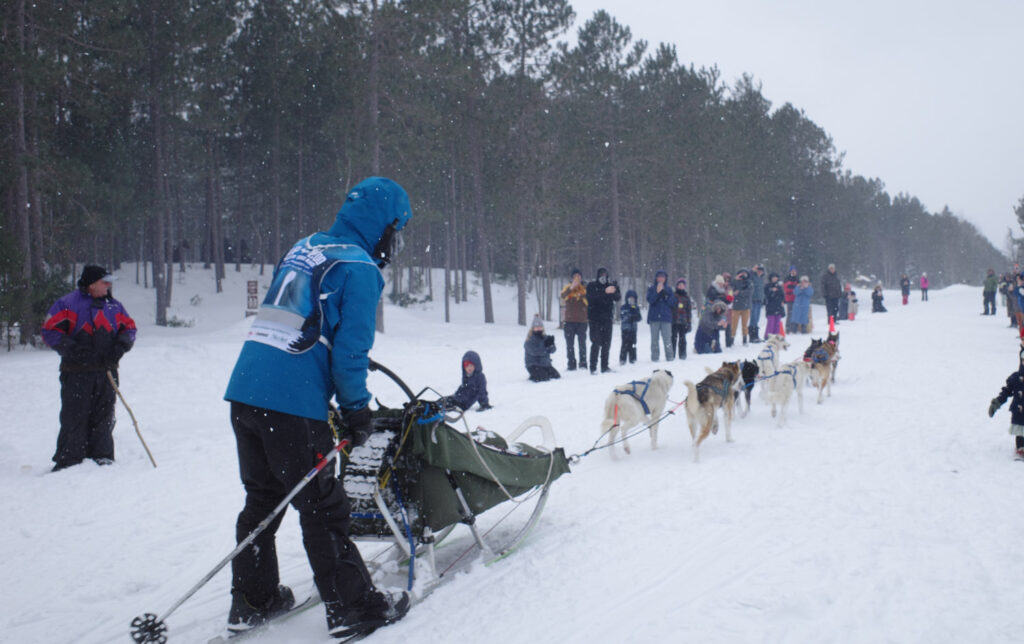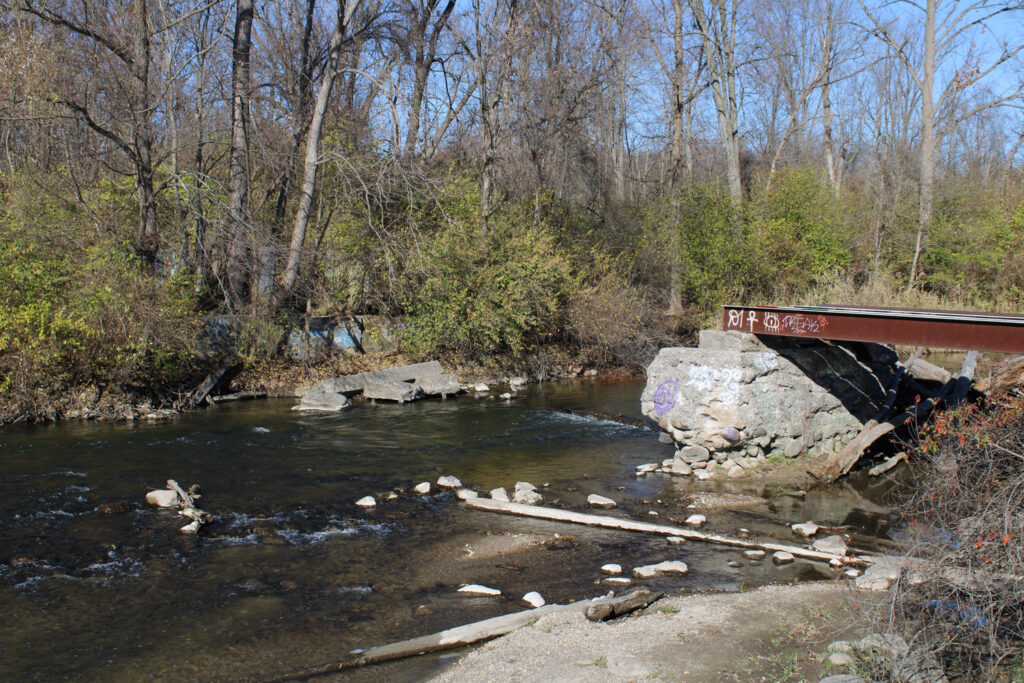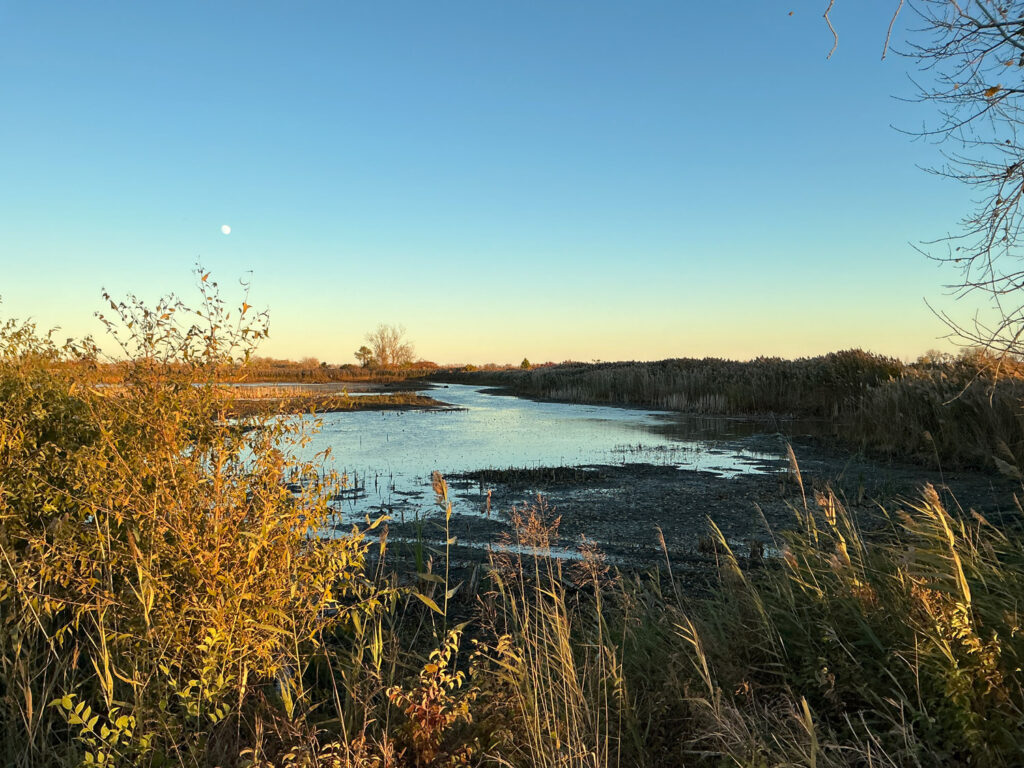Marquette — The UP200 is a punishing, 230-mile-long dog sled race that runs from Marquette, east along the northern edge of the Upper Peninsula to Grand Marais, and then back west to Maquette again. The sled dogs and their mushers push through, day and night, completing the bitter 230-mile-long journey in less than 48 hours.
A total of 19 teams from the U.S. and Canada competed in the grueling race this February. The mushers are, quite frankly, insane (in the best way imaginable). To willingly strap yourself on the back of a sled and fight your way through perilous terrain and desolate wilderness with a handful of dogs, you have to be made of something stronger than the rest of us.
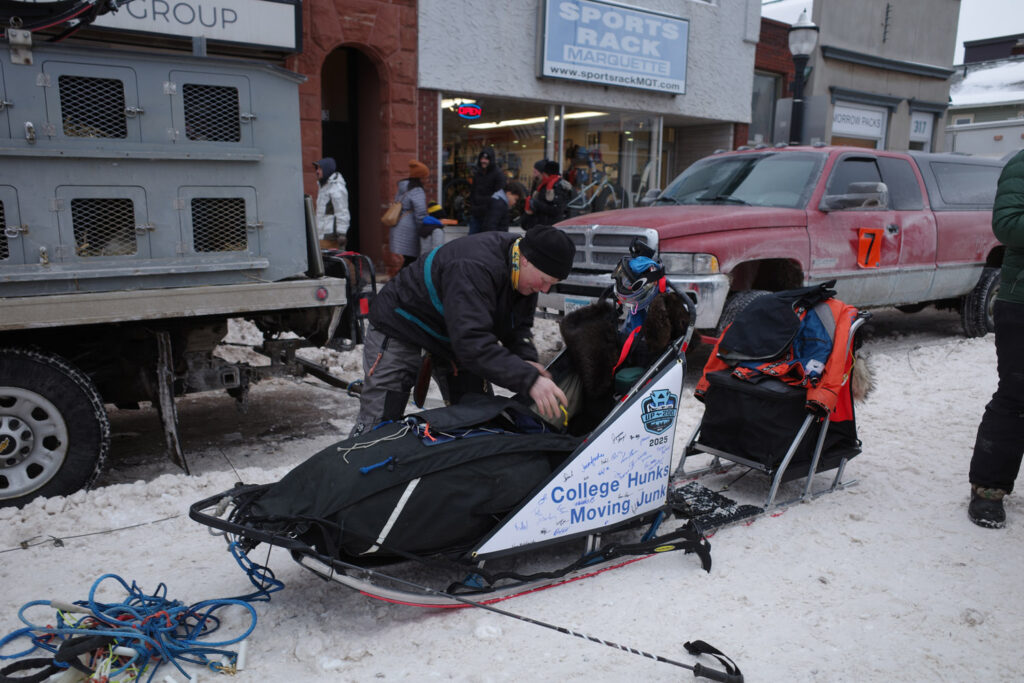
It was 12 degrees on Washington Street, as crowds waited for the race to begin. Fumbling with my phone and camera, my fingers felt like sticks about to break. All I could think about was getting inside and getting warm. The mushers were just getting started. The race began at 7 p.m. Just as the crowd—which was keeping warm with hard liquor and bottles of beer—was aching to head back inside, the teams were heading out into the night.
The teams were comprised of 12 Alaskan huskies and a musher. But these dogs don’t really look like the huskies we are used to seeing. They don’t look as fuzzy or cuddly. These dogs aren’t bred to be pets. They are bred to run.
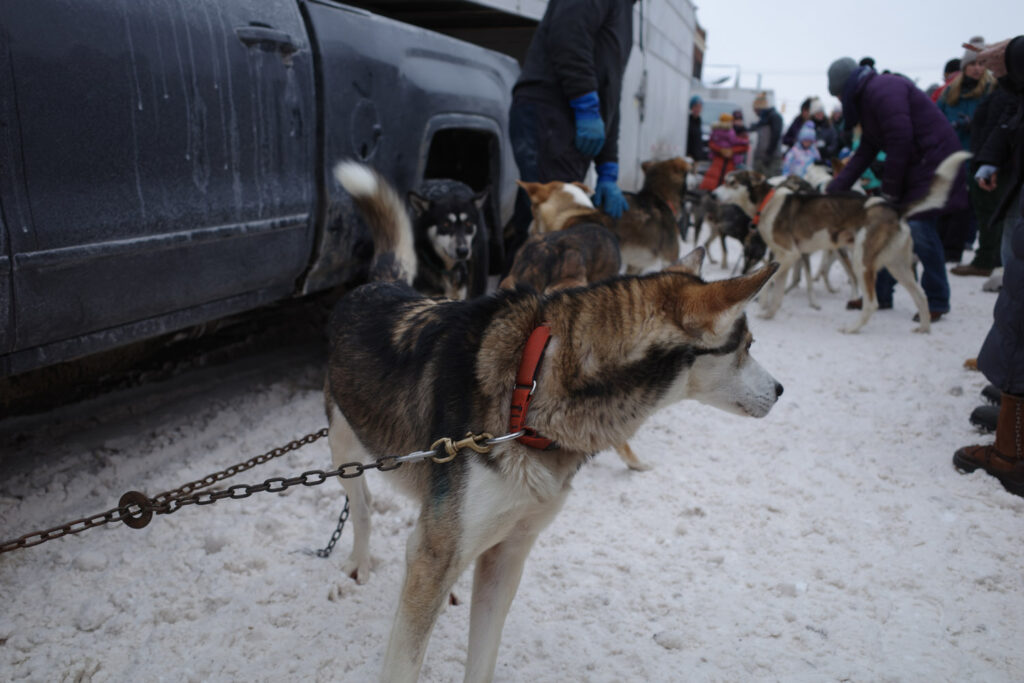
After years of planning, the first UP200 was run in 1990. The route was different in those years, running from Marquette to Escanaba. In 2003, the turnaround point shifted from Escanaba to Grand Marais, and it’s stayed that way since. The past couple winters have been oddly warm up north and the UP200 was cancelled in both 2023 and 2024 due to lack of snow. But this year, the race was back on.
A few hours before the race, spectators wandered along the snowy road, talking with mushers and watching the dogs. Beside each sled were a truck and trailer with a little door for each dog. The mushers kept their dogs inside the warm trailers as long as possible. They spent the afternoon packing up, repairing sleds, and making last minute preparations.
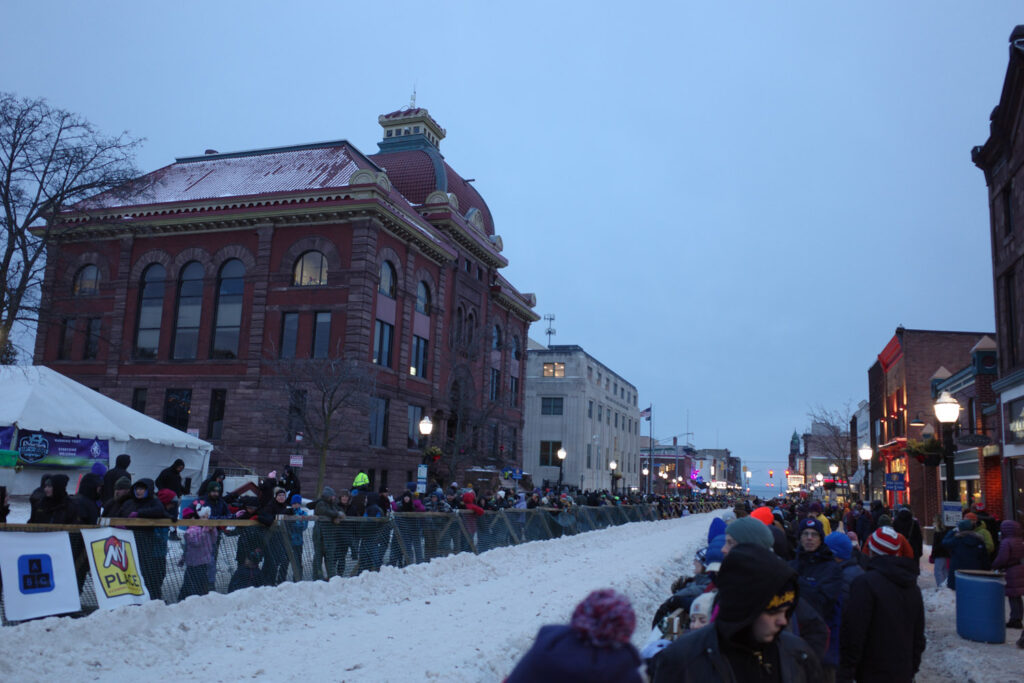
As the hour approached, the dogs gradually came out and onto the street. Some were calm and enjoyed the careful petting of passing strangers. Others were more aggressive, and decidedly on edge.
As the light dimmed, there was a palpable, frenetic energy in the air. Dogs howling and chattering. Jumping and scratching. Chains rattling. A few huskies from one team would start barking frantically at another. Then a few others from another team would join in. Soon the street was alive with dogs, full of energy, itching to run.
In the era of pet worship and fragile fur babies, the whole scene felt practically out of time. These dogs on Washington Street weren’t meant for show, they were meant for action. It was so honest, so timeless, so real. The first recorded dog sled race was in 1908 in Alaska. I imagine the scene wasn’t terribly different than the scene at the UP200 in Marquette this February.
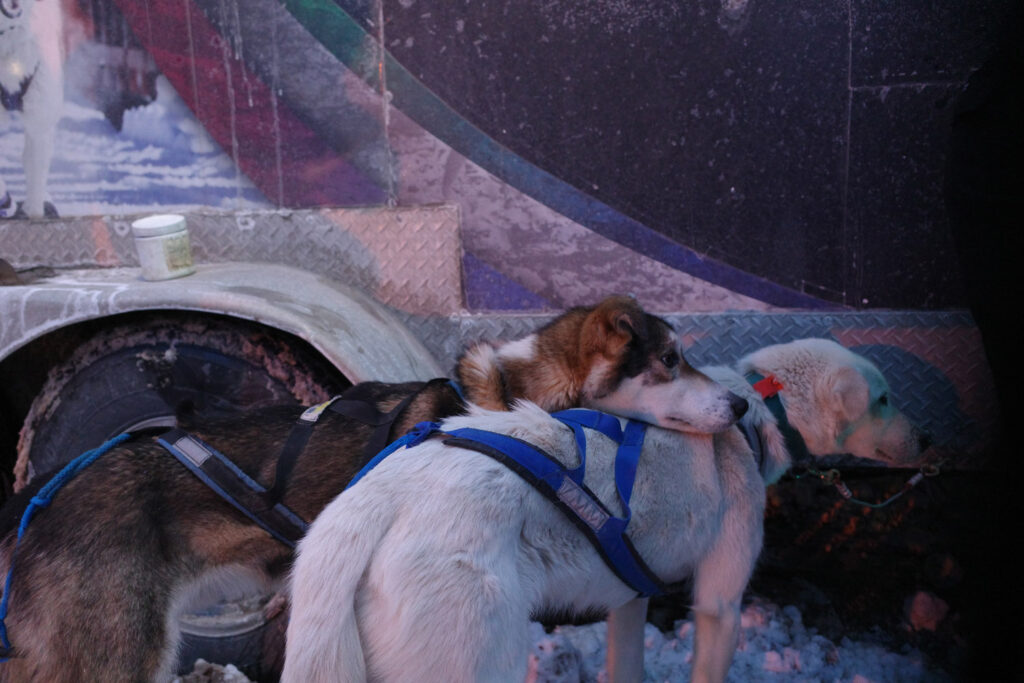
The 19 teams raced forward Friday night, through Saturday, and into Sunday. Around noon, I was on a trail behind a park called Lakenland, five miles east of the finish line, to catch a glimpse of the lead team heading west. There were many locations along the trail for spectators to view the sleds as they hurried along, this was the last before the finish line.
Back in the woods, 100 feet from the trail, there was a roaring fire made of huge logs. We all huddled around, warming our hands and feet as we waited for the team to pass. There was free instant coffee and hot cocoa in a little shanty. Pots of water were boiling on a wood burning stove. Swarms of snowmobilers buzzed in and out of the woods. It was, truly, a U.P. scene.
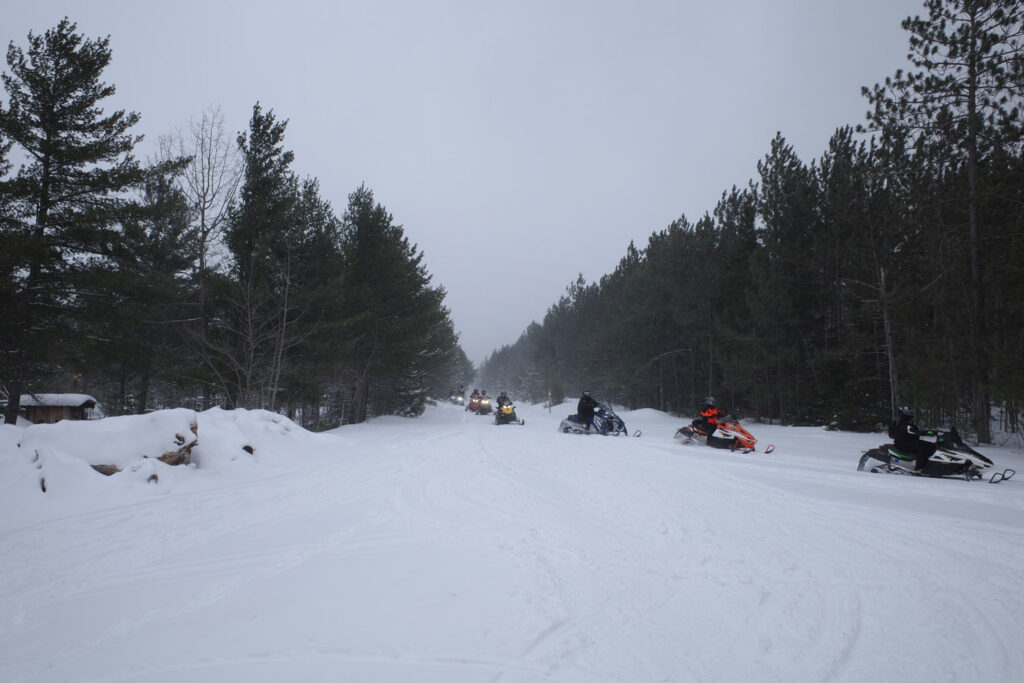
Around noon, we caught sight of the leading team heading our way. Tall pines framed the snowy trail on either side. Martin Massicotte of Quebec and his dogs were just a few miles from victory. Watching the solitary sled move relentlessly toward us along the snowy trail, I imagined what kind of strength you need to steer that sled.
Pushing through the freezing cold. Driving the dogs into the night. Completely alone. Surrounded by the dark woods. Only the sound of labored breathing and sliding snow beneath the sled. Resting little over 2 days. The kind of steely determination needed for something like the UP200 is foreign to most of us. The traits necessary are nearly primordial. Something deep that we can’t necessarily learn.
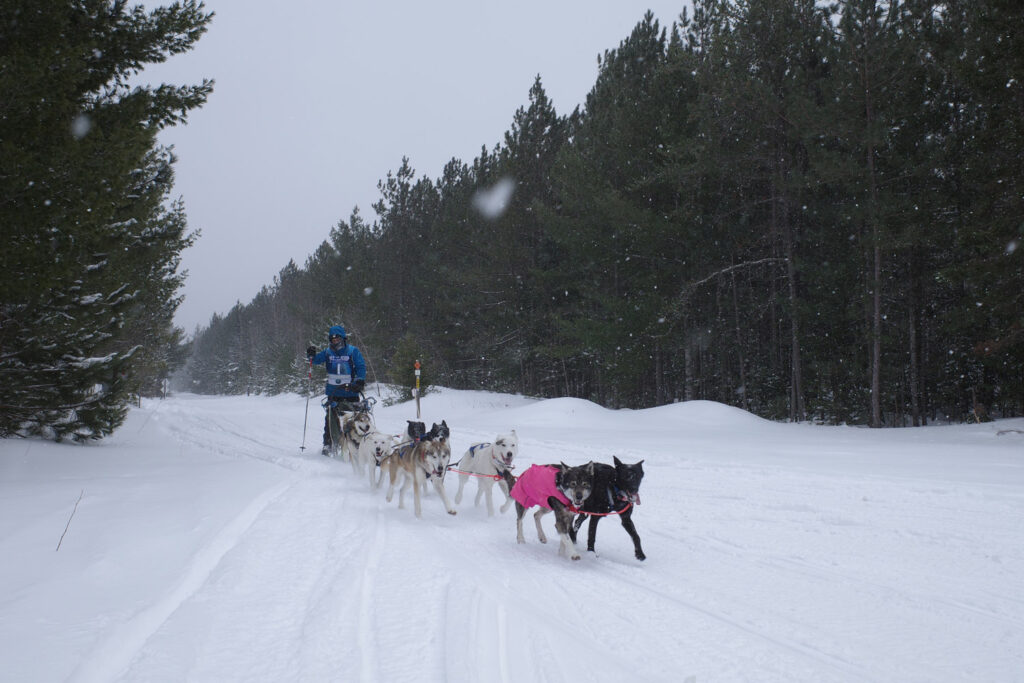
The dogs ran panting. Their tongues dangling. Their feet trudging through the powdery snow. Massicotte’s face was almost entirely covered. A pair of ice blue eyes and frozen eyebrows were all that was visible behind the mass of winter gear covering the lone musher.
The sled passed in just a moment. I couldn’t help but feel like I witnessed some kind of pure form as they raced by. Something practically archaic. These huskies doing what they were born to do. Massicotte doing what he was born to do.
O.W. Root is a writer based in Northern Michigan, with a focus on nature, food, style, and culture. Follow him on X @NecktieSalvage.
